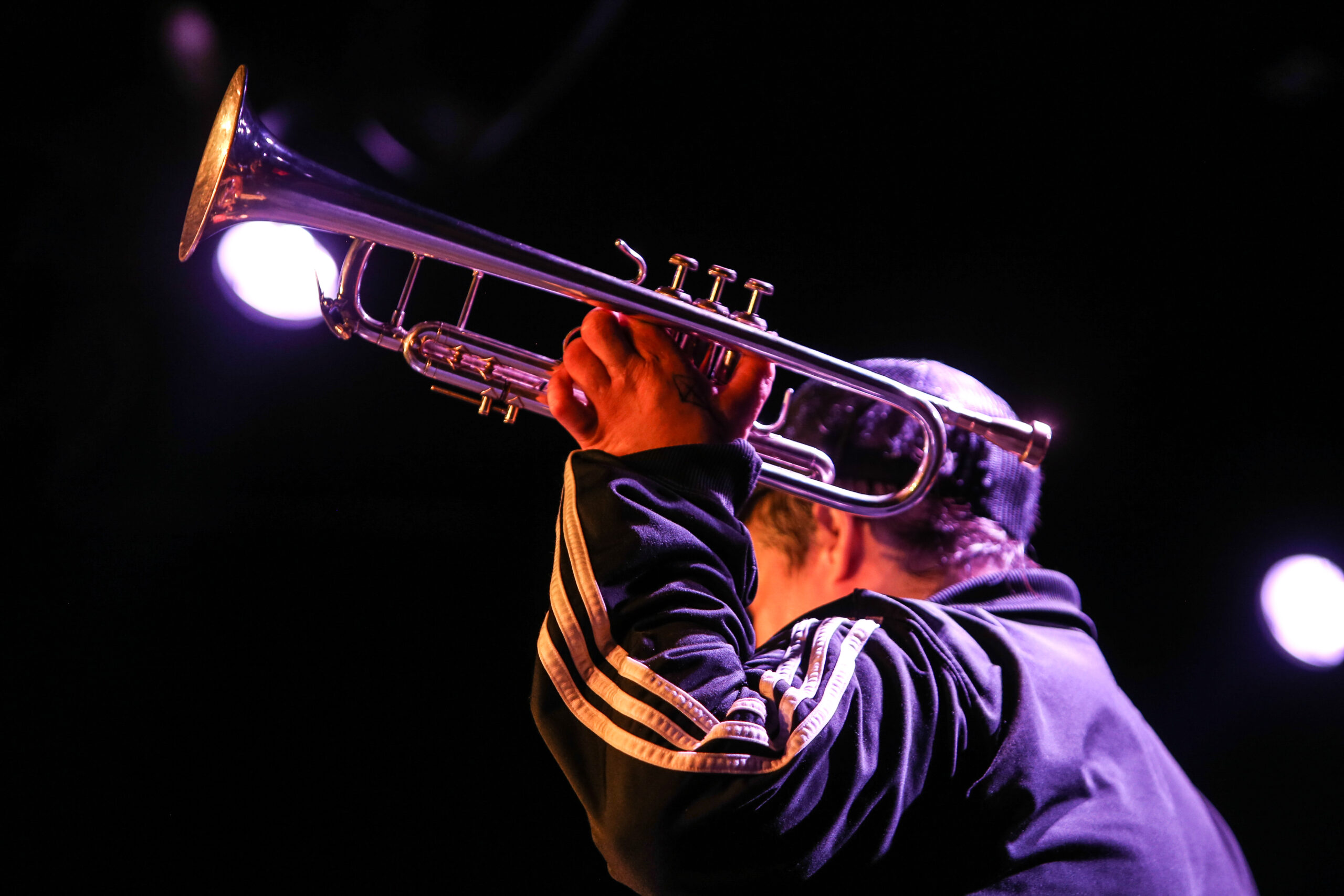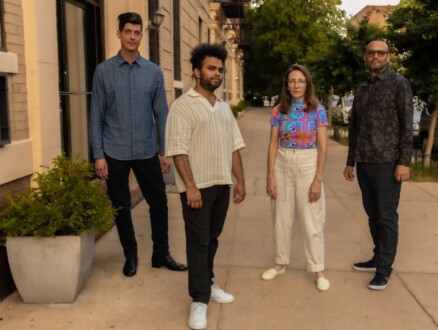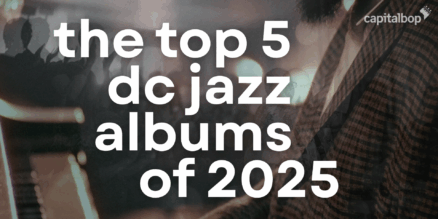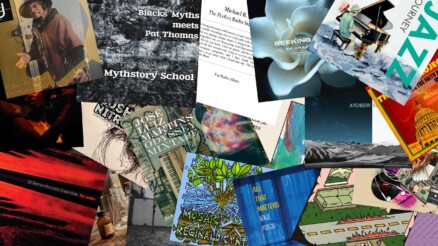How the DC JazzFest went from ‘a sketch on a paper napkin’ to its 20th anniversary
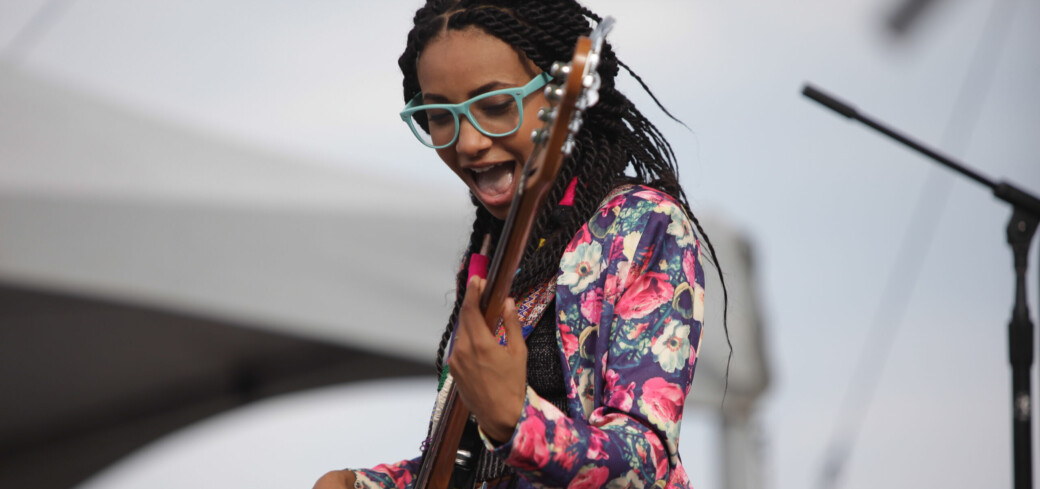
This year’s DC Jazz Festival, which kicks off on Wednesday, will be the 20th. It’s a big milestone for what was once quite literally just a napkin scribbled with notes. “We’ve come a long way,” Sunny Sumter, the festival’s executive director, said in an interview. “Can you imagine? [DCJF founder] Charlie Fishman and [his wife] Stephanie Peters spent countless hours working on making an annual citywide event out of a sketch on a paper napkin.”
Those hours bore fruit. The festival has gone through many permutations, from a modest weekend celebration to a weeks-long, citywide affair that incorporated organizations and genres across the jazz spectrum, with headline concerts that were largely free to the public.
The pandemic took a toll on the festival’s support network, and after moving from mid-June to late August, it has downsized in recent years. The DCJF is now largely contained in one packed weekend of ticketed music on the Southwest waterfront, even as its programming — under the guidance of artistic director Willard Jenkins — has remained bold, presenting a diverse view of jazz’s present state.
– Read CapitalBop’s guide for what to catch at the 2024 DC Jazz Festival –
The DC JazzFest is now an institution in the District. Each Labor Day weekend, thousands of spectators descend on the Wharf in Southwest D.C. to hear the music emanating from the piers and indoor stages tightly packed into the commercial strip.
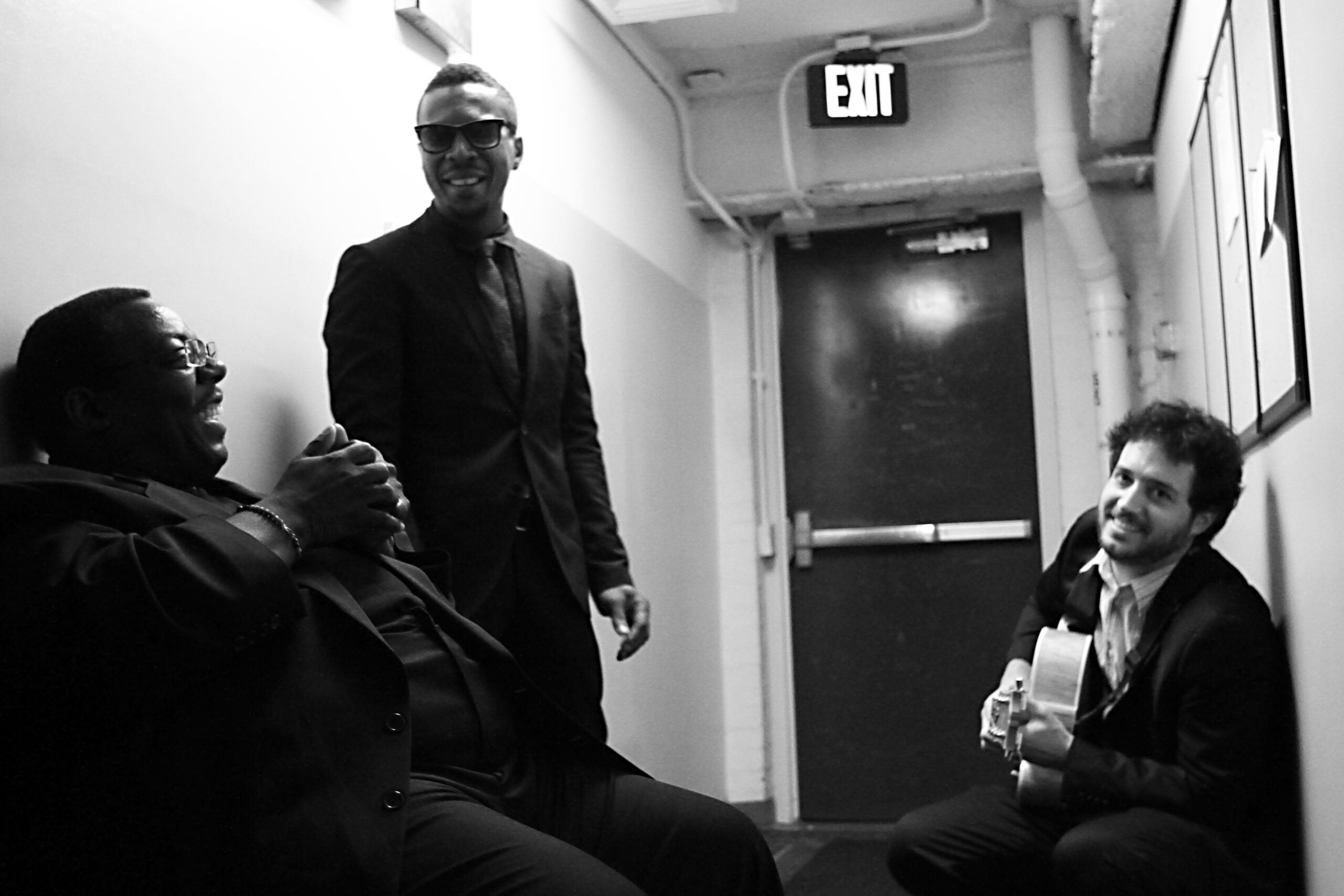
The path to where DCJF is today has been a long one, widening and narrowing, meandering all across the capital to reach a present that’s still in flux.
Duke Ellington Jazz Festival: The beginnings
The famous napkin was from Cashion’s Eat Place, a now-defunct Adams Morgan restaurant that was a favorite of Fishman’s. He was then a music and arts event producer who had managed Dizzy Gillespie in the legendary trumpeter’s final years. Born in Brooklyn, Fishman had been in D.C. for 30 years and was all too aware of a big hole that existed in its cultural life.
“Going around the world with Dizzy, you could go to Montreal, you could go to Nice, and then you go into small towns and villages, and there was jazz,” Fishman recalled in a 2017 interview. “It was ridiculous that the capital of the United States of America, which invented the music, didn’t have a jazz festival.”
Over dinner at Cashion’s, circa 2003, Fishman and Peters, an attorney, outlined the festival they wanted to see. They would call it the Duke Ellington Jazz Festival, in honor of the District’s greatest musical scion, and from the beginning they planned it as a citywide festival, drawing upon neighborhood venues and musicians all across the city, with educational and family components as well.
They took these ideas to Bob Peck, a friend who was then president of the Greater Washington Board of Trade; Peck helped them get meetings with the Washington Post, the office of then-Mayor Anthony Williams, and other potential stakeholders. Fishman was able to raise seed money, and the Duke Ellington Jazz Festival officially incorporated in 2004.
Its first actual event took place a year later: Sep. 28-Oct. 2, 2005. There were three headlining concerts: two nights at U Street’s historic Lincoln Theater with Dave Brubeck and Chico O’Farrill, and a free all-day concert at the National Mall’s Sylvan Amphitheater with Wallace Roney, Chuck Brown, the Dirty Dozen Brass Band and the Wayne Shorter Quartet.
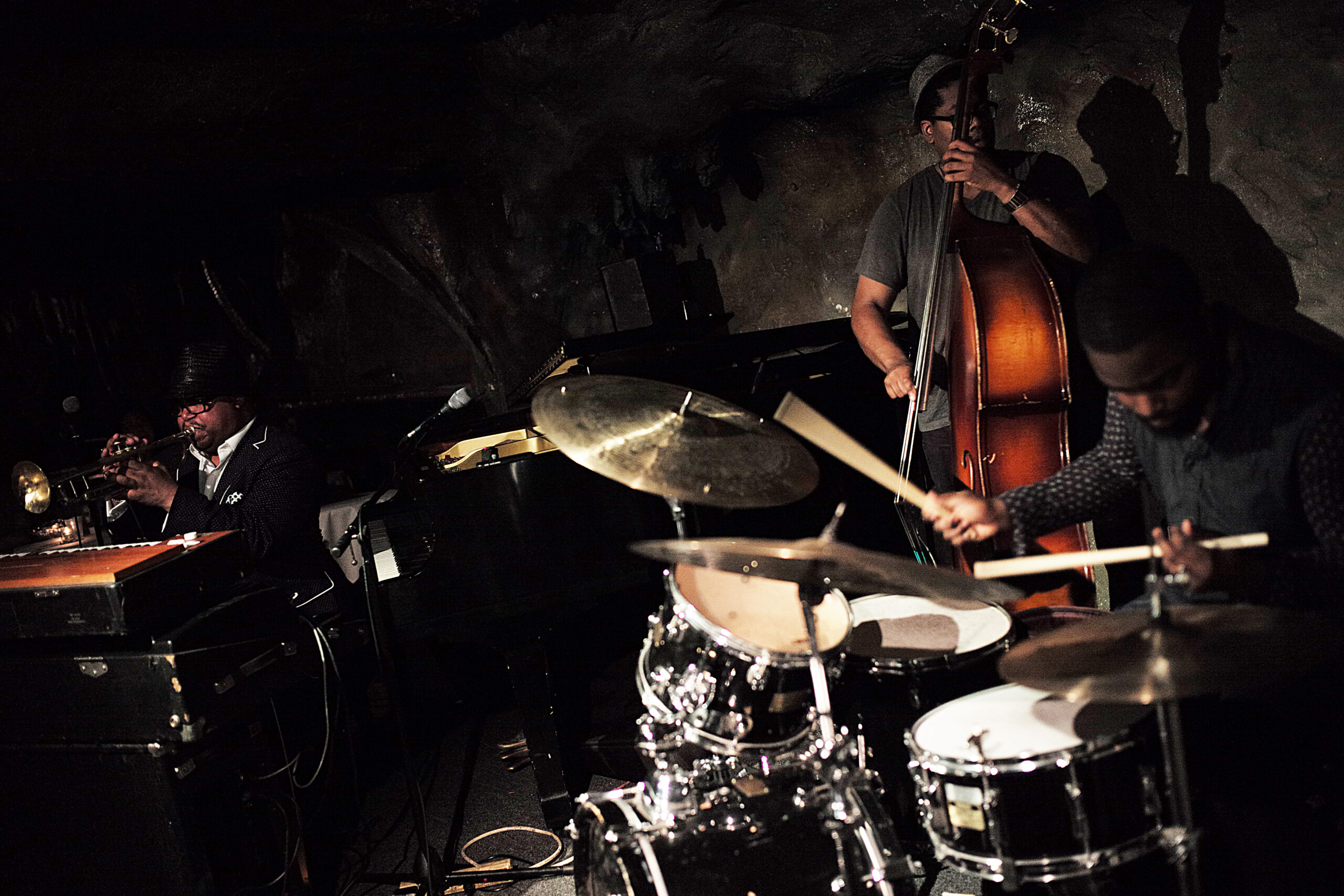
But that wasn’t the whole story. Fishman fulfilled his citywide concept by working with venues around the city to incorporate their jazz offerings into the festival program, a component that the festival would come to call “Jazz in the ‘Hoods.” That first year thus included performances in 18 venues across the city, including the Kennedy Center, the Natural History Museum, Bohemian Caverns and 10 other restaurants, bars and clubs along the U Street corridor.
Expansion and a Name Change
The fledgling DCJF grew quickly. More and more local venues signed on to the Jazz in the Hoods program. Fishman enlisted Paquito D’Rivera, a Cuban-born clarinetist and protégé of Gillespie’s, as the festival’s artistic director, and Sunny Sumter—a vocalist who had performed in the first festival, but also a public policy coordinator—as director of partnerships.
“I talked to the Phillips Collection, to the Atlas [Performing Arts Center, on H Street NE], the National Gallery of Art,” Sumter recalls. “Major institutions around the city. My job was to bring them together in some form or fashion to support the festival.”
It worked. The festival was able to scale up for its fourth edition in June 2009 (moved up from the fall dates of previous years), which was a tribute to New Orleans. It encompassed 11 days, 50 venues and 100 performances across all four quadrants of the District. There was a Jazz ‘N Families Fun Day at the Phillips Collection, featuring activities and performances for children; a gala at the French Embassy with D’Rivera and New Orleans clarinetist Dr. Michael White; a celebration of the Marsalis Family at the Kennedy Center (which became a 2010 live album, Music Redeems); and the two-day National Mall concert (featuring Terence Blanchard, Donald Harrison and other New Orleans greats before daily audiences of 25,000 people), broadcast live on New Orleans’ WWOZ radio.
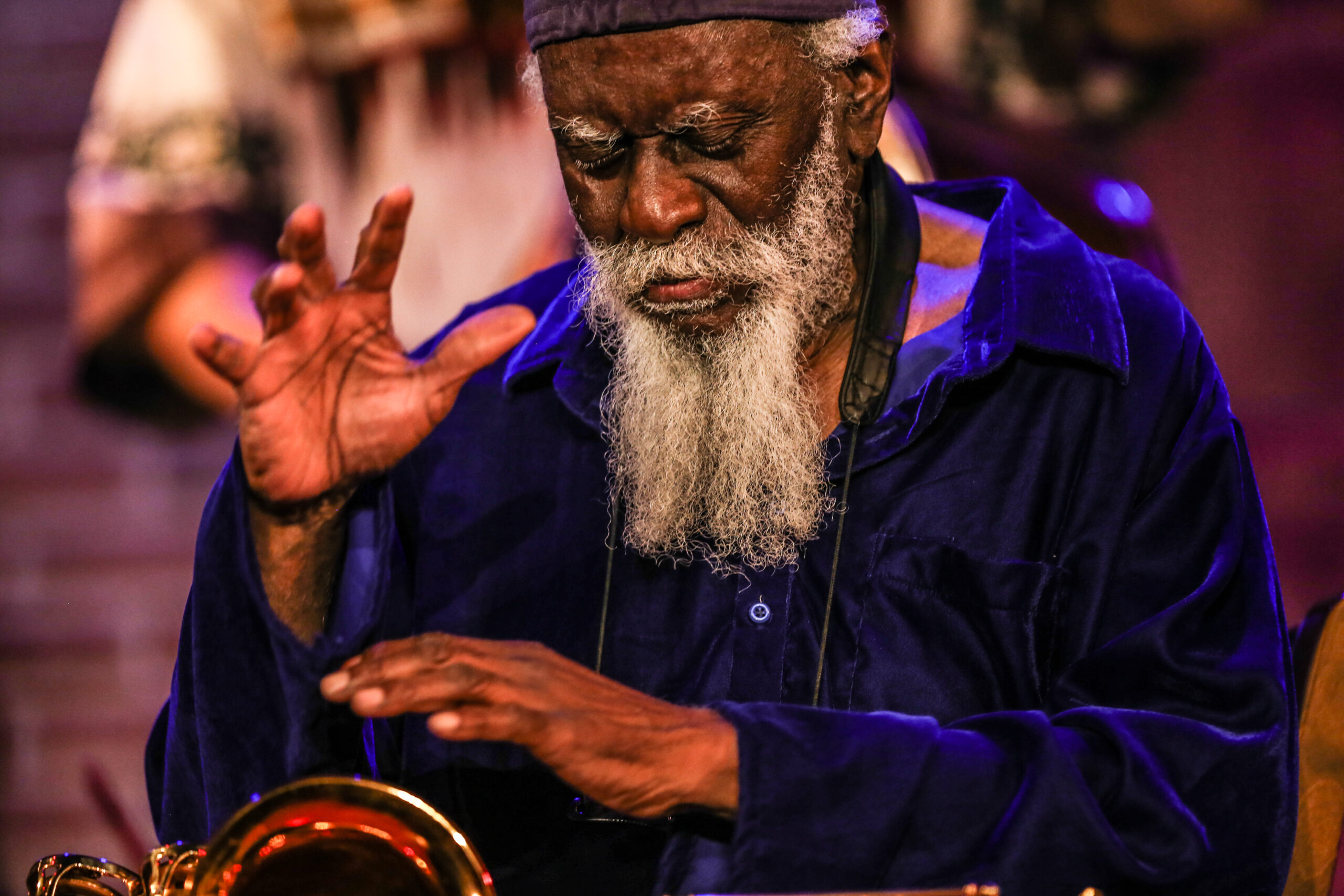
Yet 2009 was also a turning point for the DCJF. It lost its earmark in the D.C. annual budget, forcing it to look elsewhere for funding. It was also the festival’s final year using the Ellington name. The Washington Sports Authority and Washington Tourism Board had changed their names to Events DC and Destination DC, respectively; following their lead, the festival decided to rebrand itself with the city’s name.
“From that we were able to really institutionalize the Jazz Festival,” Sumter recalls, “and to build the stakeholders from around D.C. that may not necessarily be jazz fans, or want to support a jazz organization, but want to support a cultural institution that brings people from all around the world to D.C.”
The DC Jazz Festival premiered as such in 2010, with the keynote concert moved to George Washington University’s Lisner Auditorium. It moved back to the Mall in 2011, and its umbrella of partner organizations widened, working with jazz advocate Vernard Gray to incorporate the River East series, presenting music at locations in the oft-overlooked neighborhoods east of the Anacostia River, and with veteran local presenters Transparent Productions to bring more avant-garde performances to the festival. (CapitalBop also curated some of its first major shows as part of the DCJF, presenting cutting-edge artists like Tomas Fujiwara, Darius Jones and the JD Allen Trio in its DIY-leaning D.C. Jazz Loft Series, which ran for the ensuing 10 years.)
The Jenkins Era
By 2014, the DCJF was firmly established on the city’s annual calendar. It had also become a bit stale, relying on perennial bookings like Roy Hargrove, Anat Cohen and Roberta Gambarini. Following that year’s festival, Fishman retired, and the DCJF board decided to move in a new direction. They hired Willard Jenkins, a D.C.-based jazz journalist, advocate and producer (and now a National Endowment for the Arts Jazz Master) who had directed Cleveland’s Tri-C Jazz Festival, as the new artistic director.
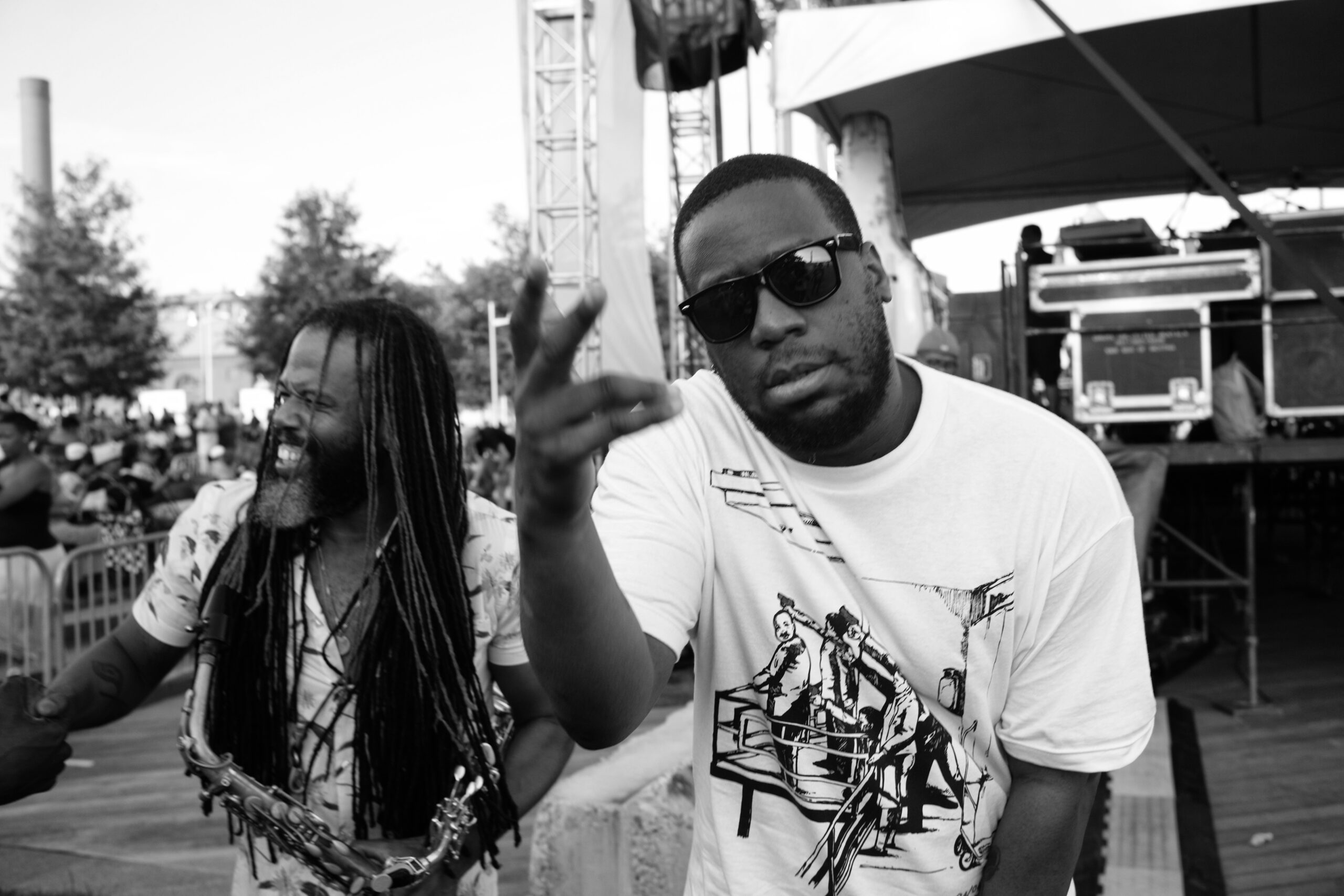
“I try to be as comprehensive as possible with an event of this size,” Jenkins told CapitalBop, explaining his vision. “For example, I think if you’re going to have a great festival, you better have some major voices. You’ve got to well represent the tenor saxophone tradition. You’ve got to have a certain number of true designated masters. I also think that you have to have significant emerging artists. And, of course, being a community as we are that is rich in resident jazz musicians, you have to represent the continuum here in this community.”
This approach was immediately apparent in 2015, Jenkins’ first year on board. The lineup included fresh additions like the Bad Plus, Joshua Redman, Gretchen Parlato and Lionel Loueke, esperanza spalding and the Cookers, along with local favorites Allyn Johnson, Kris Funn and the Bohemian Caverns Jazz Orchestra.
With Jenkins’ arrival came a renewed push for innovation. In 2015 the DCJF found a new home for its signature outdoor extravaganza in Yards Park, along the Anacostia Waterfront. The year after, the festival introduced the DCJazzPrix: a musical competition focused on working bands. The winner would be offered a spot on the following year’s festival program. The festival was garnering wider acclaim and prestige across the United States and around the globe. In 2018, the DCJF took up new performance hubs both indoors (at City Winery in Ivy City) and out (at The Wharf in Southwest).
All these elements converged into the DCJF’s largest, most successful edition yet in 2019. The numbers tell the story: Over 110 artists performed in nearly 40 venues across 11 days, attracting 120,000 spectators.
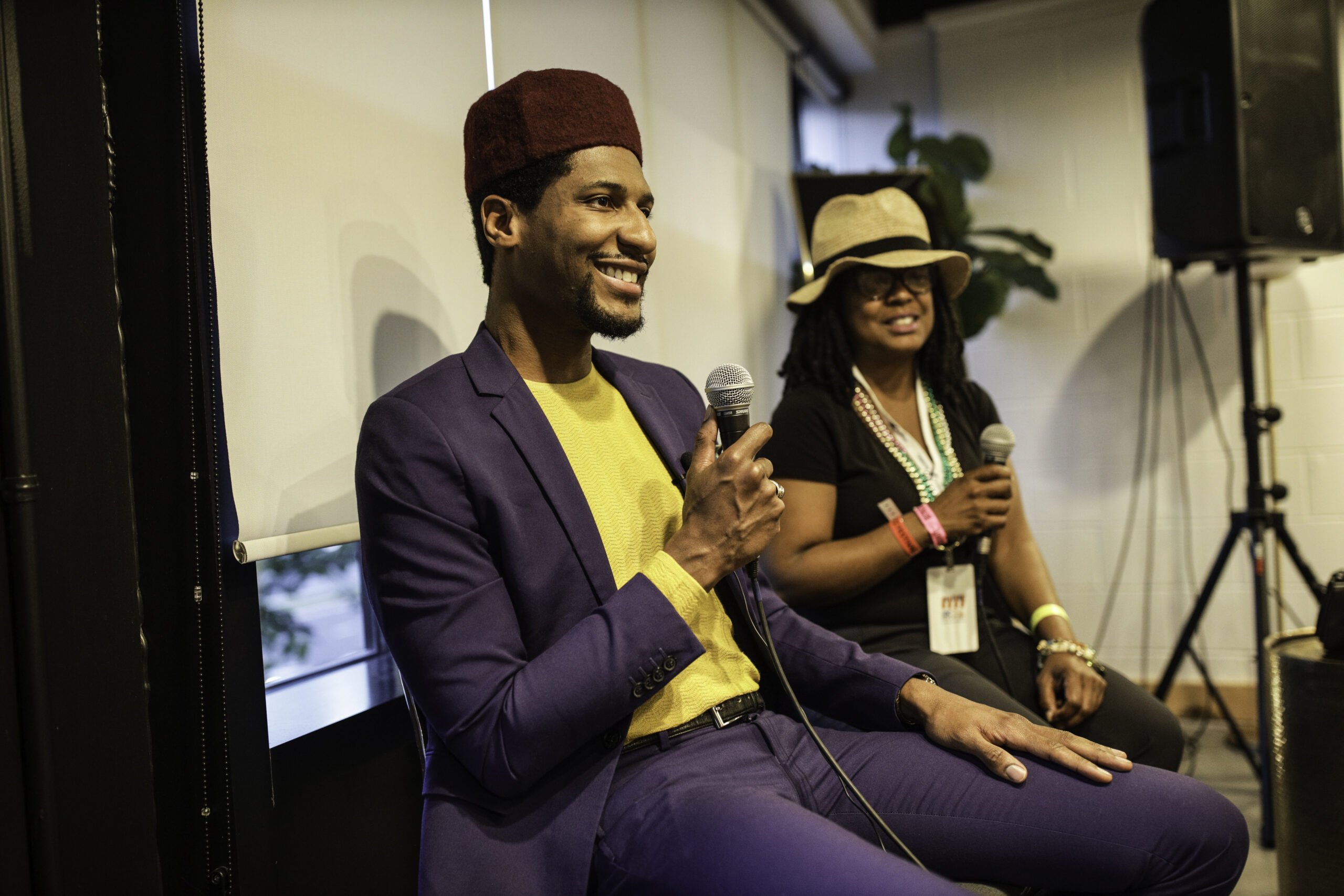
“It felt like all the stars had aligned,” said Sumter, who became the festival’s executive director in 2014. “We had lots of Jazz in the Hoods experiences happening citywide. People were calling us saying, ‘Can we use our loft space? Can we use our church?’ And then we had this culminating tentpole weekend at the Wharf, with two days at the Anthem featuring Snarky Puppy and John Batiste. It was record-shattering.”
The festival had even bigger plans for 2020.
The COVID Effect
We all know what happened next. The budget and momentum the festival had amassed from its 2019 blockbuster disappeared into the fog of a pandemic. The DCJF, like everything else, was forced into a socially distanced world. Sumter, Jenkins and their staff (which they were able to retain) did well with those very limited resources, producing two series of livestreamed concerts and curating a virtual festival of archived and remote performances.
This allowed the festival to rally in 2021: reduced to a single weekend and a single location, delayed from June to September, more reliant than usual on local artists, but alive and kicking.
It’s had to adapt to profoundly changed circumstances. The budget has been depleted, since donors are still recovering money lost from the lockdowns. A number of important music venues never reopened after COVID, decimating the Jazz in the Hoods component. Yet each year since its return, the DCJF has put on a consolidated but still-full festival event, primarily based at the Wharf but each year expanding its footprint a little bit further. (The DCJF acquired office space at Arena Stage in 2022, which has allowed it to use some of the theater spaces there for concerts as well.) Labor Day has become its new permanent spot on the calendar.
These adaptations are reaping dividends. The 2023 festival, Sumter said, was completely sold out. “People then started coming in from all over the world and staying in hotels,” defying the DC tourism industry’s ongoing struggles, she said. “Butts in seats and butts in hotel rooms.”
They’re not resting on these laurels, though—and they’re not conceding that the glory days are behind them. “Charlie’s initial vision of the DC Jazz Festival being a citywide celebration, being in the neighborhoods—we do have to go back,” Sumter said. “The jazz festival is a community festival in addition to being an international festival. And we do miss that.”
For 20 years, the DC Jazz Festival has consistently set a high bar for itself. And, even if it’s had to readjust for changing resources and circumstances, it has consistently cleared that bar. Looking over its past, we can take a lesson not to discount its future.
